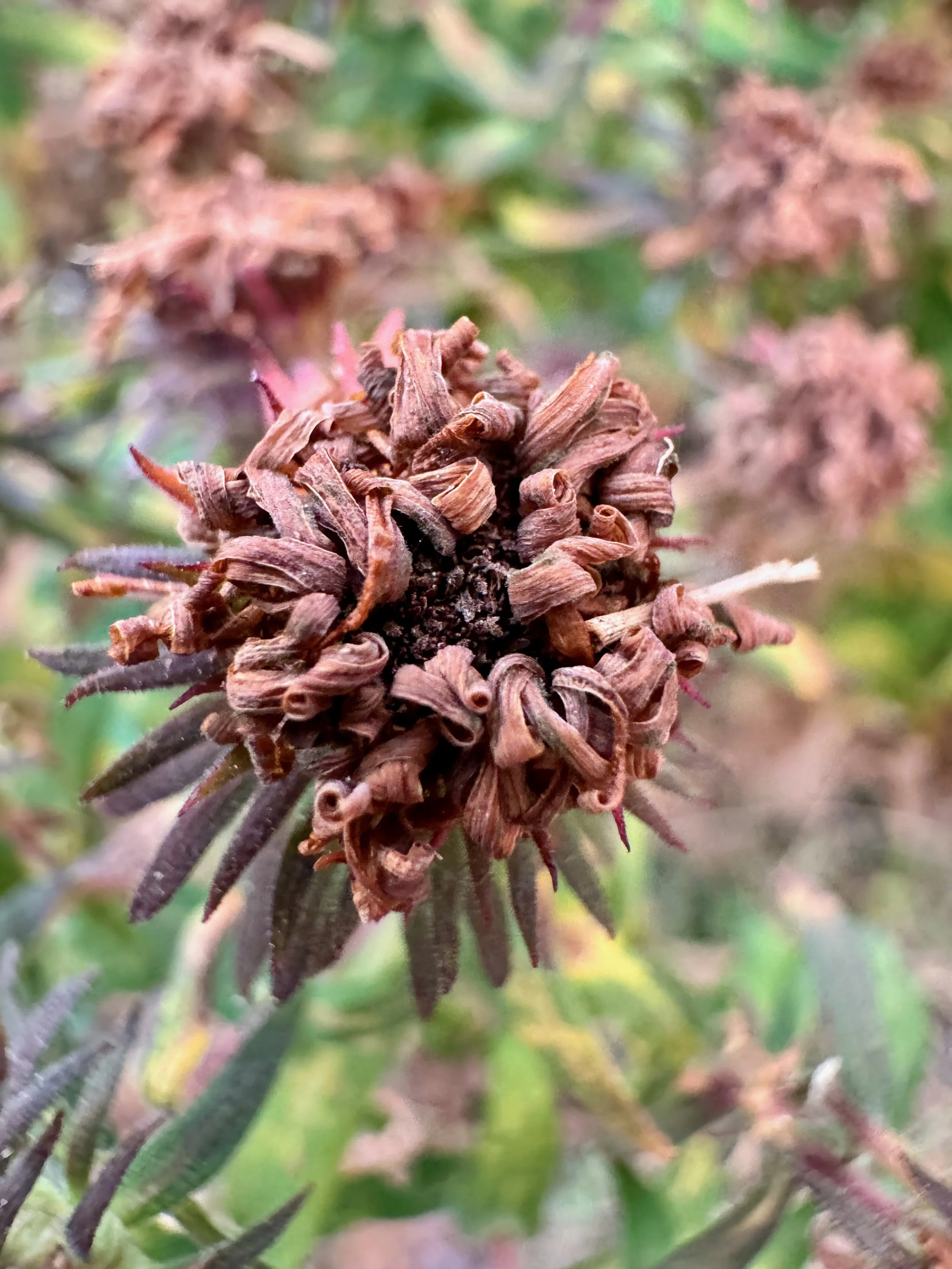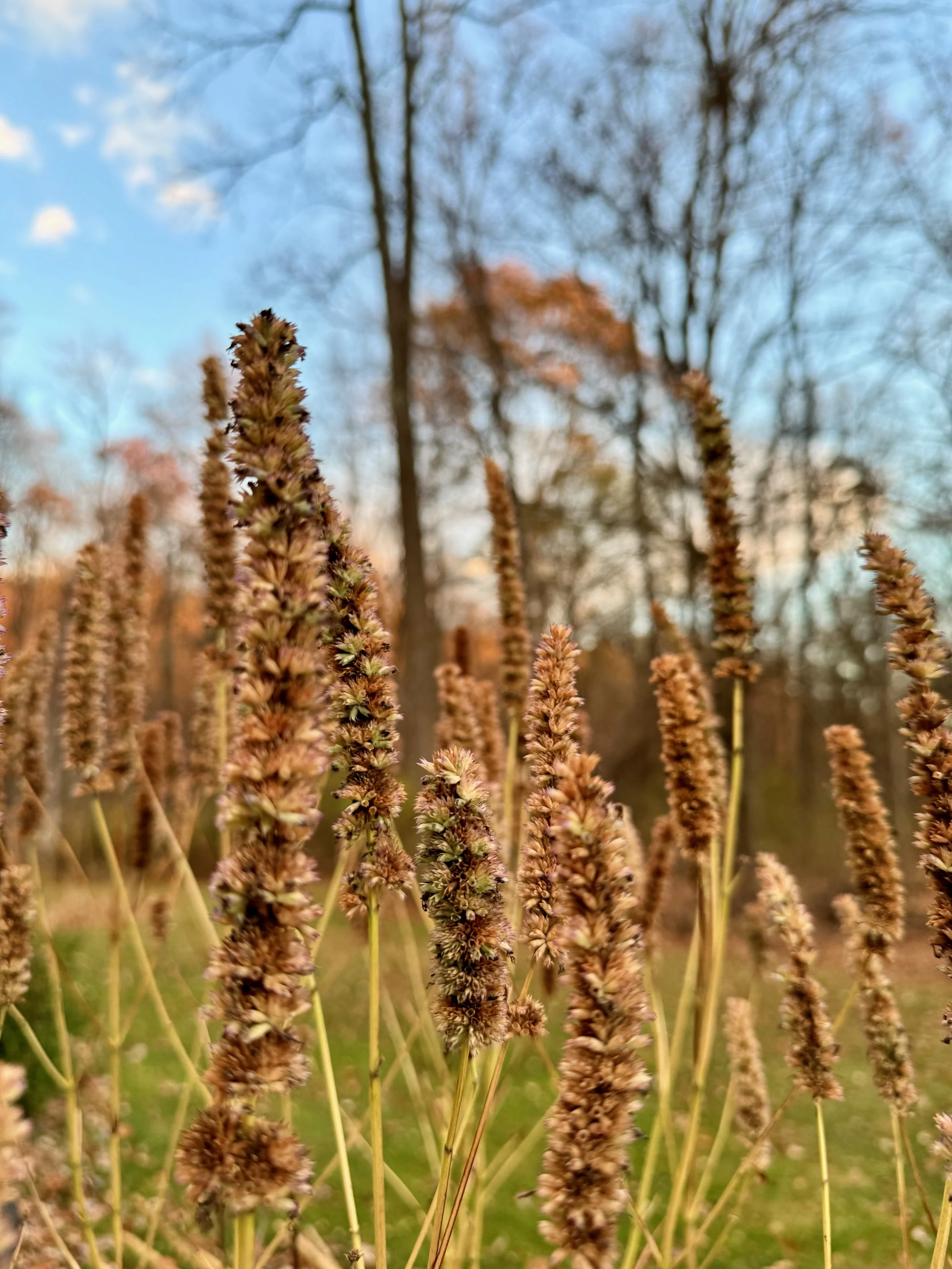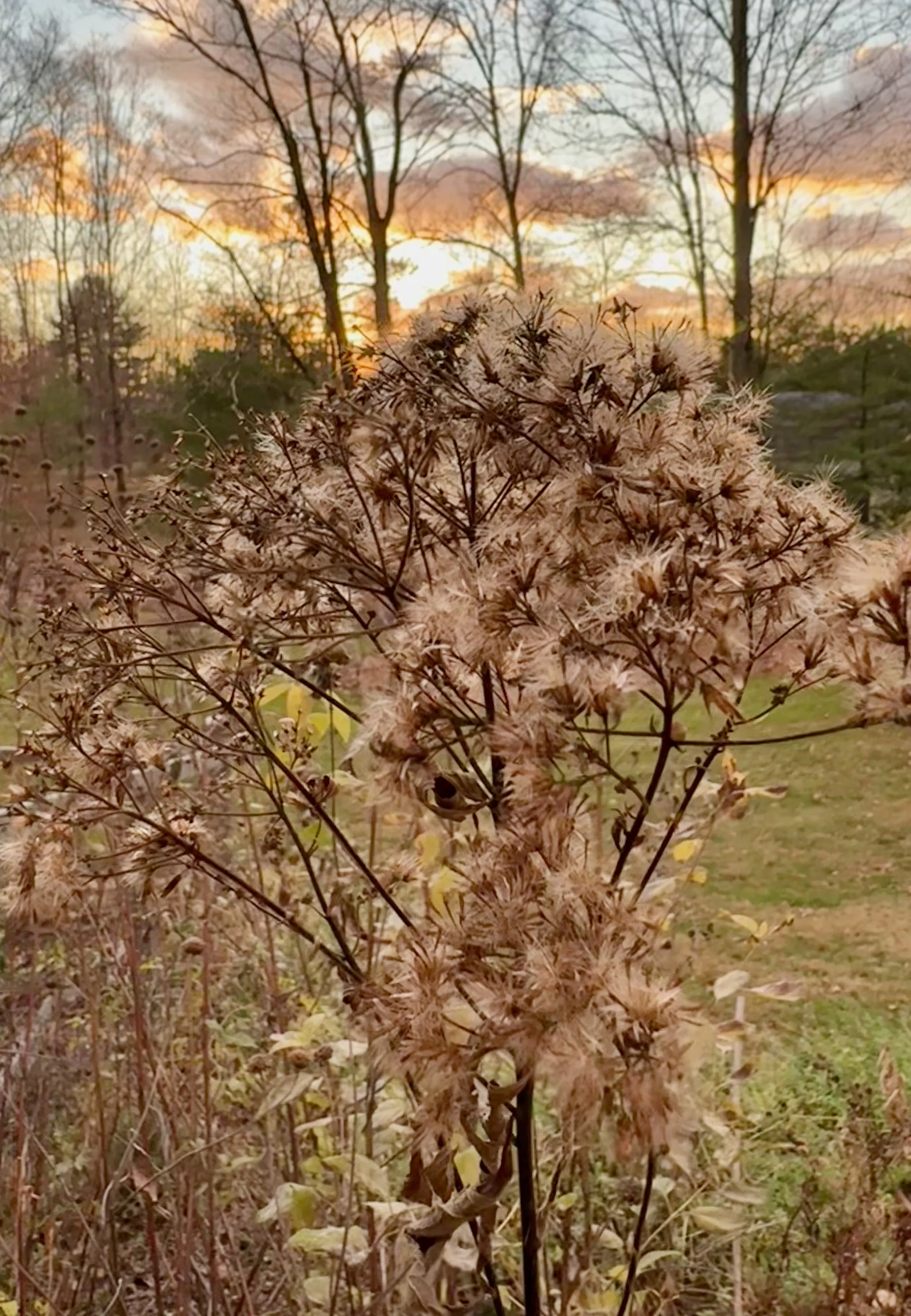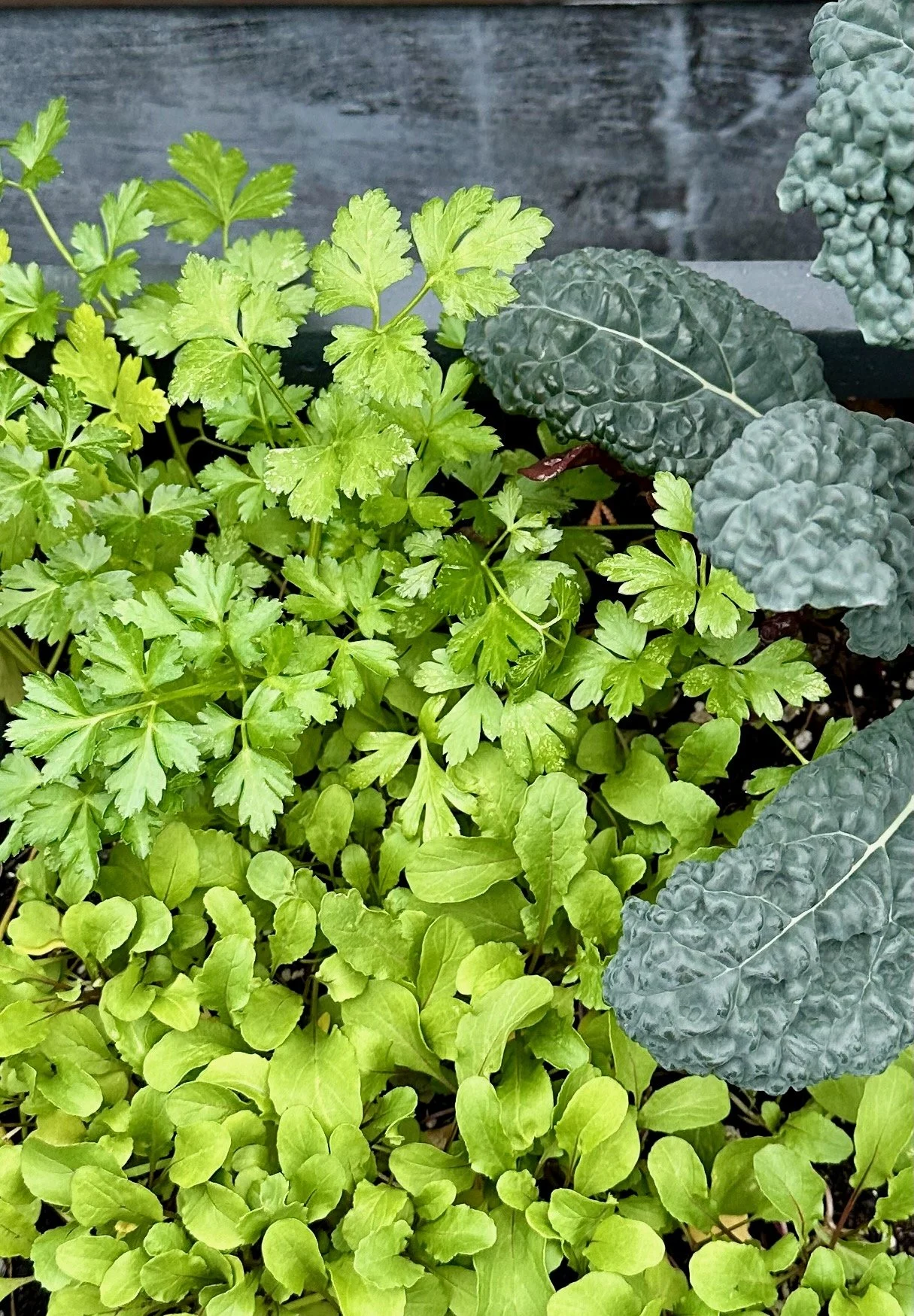Leave (most of) the Leaves
WINTERING YOUR HUDSON VALLEY GARDEN FOR BENEFICIAL INSECTS
I love when GOOD things become popular. Trends of all sorts come and go; some are innocent and fleeting, others unfortunately leave behind a mark in the landfill (oh hi, Laboubou). Even in our world of gardening, past trends have also left an impact. Many of the invasive plants now overrunning our fields and forests were originally introduced as collector's items or popular ornamentals, before we understood their ecological risks.
So, I am thrilled that a current trend is genuinely beneficial; pollinator-friendly and native gardens are now a focal point in the mainstream conversation.
Let’s take this idea a step further than the stunning pink and purple blooms that attract bees and butterflies all summer and think about how these native plants support our ecosystem during the winter season, and in turn, how to we care for them. It is a time of lesser seen relationships that sustain the cycles of decomposition, soil health, pest control, and regeneration. There is increasing chatter around the idea of “leaving the leaves” and we can only hope that this too will become trendy.
A BALANCING ACT
What benefits one part of the garden can sometimes challenge another. The decision to "leave the leaves" requires nuance.
Managing Moisture and Tender Crowns
The same thick, wet leaf layer that protects soil life can create problems for tender or shallow-rooted plants. In heavy Hudson Valley soils, a dense layer can block air and light from reaching small crowns. This traps moisture around stems, which can delay growth or even lead to crown rot in new perennials. Another consideration is the leaf type. Oak and Beech leaves can form a heavy, dense mat that will smother plants. Many of our ornamental beds are filled with plants, such as prairie species, that are not naturally covered by fallen leaves in winter.
The Challenge of Seed Germination
Leaf litter also directly affects germination. Many vegetable and native flower seeds need direct contact with the soil and exposure to light to sprout successfully. When a dense layer of leaves remains in place, seeds may never reach the soil surface or may germinate too late to establish. Established perennials with strong crowns can push through moderate debris, but first-year seedlings often cannot.
For this reason, clearing litter in areas where you plan to seed, transplant, or grow young plants allows better airflow and light penetration, while still keeping that organic material elsewhere on the property where it can continue to benefit insects and soil life.
INVASIVE JUMPING WORMS
Over the past decade, invasive jumping worms (Amynthas spp. and Metaphire spp.) have spread through gardens across the Northeast.
They thrive in the top few inches of soil and consume organic matter rapidly. They love a good leafy layer or compost pile. See the practical issue here?
Their manic feeding can reduce fungal networks and alter nutrient cycling, in addition to leaving the top layer of soil quite dry and granular.
Because management tools are limited, gardeners must make situational choices. On my two-acre property, I have them everywhere except my raised beds, so eradication is not an option that I’m entertaining. I have found that my established native plants and other deep-rooted perennials are not showing signs of stress, even with clear evidence of jumping worms.
I choose to continue leaving the leaves, adding fresh compost, and arborist mulch. Ultimately, supporting the beneficial life that relies on that cover needs to take precedence over the fear of the invasive species.
AN ADAPTIVE APPROACH TO GARDEN CLEAN UP
No single practice fits every garden. The goal is to maintain ecological continuity while protecting vulnerable areas. I want to share some best practices from our gardens for making these informed decisions.
Established Native Beds: Keep stems, leaves, and seed heads in place through winter. Deep-rooted plants tolerate the extra cover and continue supporting insect habitat.
Young Plants or Seeding Areas: Thin or remove leaf litter early in spring to give seedlings light and air. Keep the cleared leaves on site, perhaps under shrubs or along property edges, so overwintering insects remain within the garden system.
Monitoring for Jumping Worms: Watch for coffee ground-esque soil texture, reduced mulch layers, or thrashing worms near the surface. If signs appear, limit the depth of organic matter, avoid sharing mulch between beds, and purchase compost labeled worm-free.
Staged Cleanup: Rather than a full spring rake-out, cut stems gradually and leave short sections for nesting bees. Delay major cleanup until consistent daytime temperatures reach the mid-50s, which allows most insects to emerge safely.
Record and Adjust: Keep notes on what you observe. Track insect activity, soil texture, and the health of young plants. The feedback will guide you in future seasons.
Perfection is impossible. Leaving some leaf litter benefits soil organisms, but clearing sections protects tender plants. Choosing what to keep or remove is not a failure of principle; we are doing the best we can for local conditions with what we have to give at any particular time.
Return to the Gardenwell Journal







